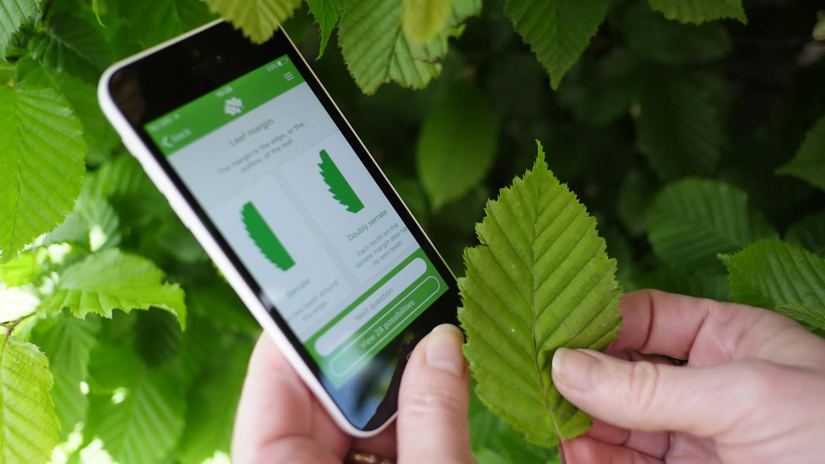
Credit: Nature Photographers Ltd / WTML
Leaves
The small, needle-like leaves are green with broad silver bands on the inner side, curving slightly to a sharp, prickly point.
A cosy home for wildlife and a gin-drinker’s delight, the juniper is a much-loved evergreen that brightens up the winter months.
Common names: juniper, common juniper
Scientific name: Juniperus communis
Family: Cupressaceae
Origin: native
Common juniper is an evergreen conifer. Mature trees can reach a height of 10m and live for up to 200 years. Its bark is grey-brown and peels with age, and its twigs are reddish brown.
Look out for: needles that have a single pale band on the upper surface and are grey-green beneath. They are found in threes around the ridged twigs. The female cones look like blueberries.
Identified in winter by: its needles which are present all year round. Twigs are ridged.

Credit: Nature Photographers Ltd / WTML
The small, needle-like leaves are green with broad silver bands on the inner side, curving slightly to a sharp, prickly point.

Credit: Blickwinkel / Alamy Stock Photo
Common juniper is dioecious, meaning that male and female structures grow on separate trees. Male structures are small, yellow and globular, and grow in leaf axils near the tips of twigs.

Credit: Armands Pharyos / Alamy Stock Photo
Once pollinated by wind, the green female structures develop into fleshy, purple, aromatic, berry-like cones. These are eaten and distributed by birds. When young, the berries are green but over 18 months or so they mature to purple-black.

Download our free Tree ID app for Android and iPhone to identify the UK's native and non-native trees. It's an A-Z tree guide in your pocket.
Download the appBurning juniper on Walpurgis Night is said to keep witches away.
Common juniper is native to the UK, Europe and much of the northern hemisphere. It thrives on chalk lowland, moorland, in rocky areas and old native-pine woodland. It is most often found as a low-growing, spreading shrub or small tree.
Common juniper provides dense cover for nesting birds, such as the goldcrest and firecrest, and, in northern upland areas, the black grouse. It is the food plant for caterpillars of many species of moth, including the juniper carpet moth, juniper pug and chestnut-coloured carpet. A number of birds eat the fruit, including the fieldfare, song thrush, mistle thrush and ring ouzel.
Juniper berries have lots of traditional uses and were associated with love potions.
In some areas, juniper is considered to be a deterrent against the Devil and witches. It was hung over doorways on the eve of May Day and burnt on Halloween to ward off evil spirits. It was said that you would prosper if you dreamed of gathering juniper berries in winter, and the berries themselves signified honour or the birth of a boy.

Credit: Visuals Unlimited / naturepl.com
The most famous use of juniper berries is in the flavouring of gin. They have also recently become a popular ingredient in liqueurs and sauces and are used as a spice, particularly in European cuisine. The aromatic wood has a warm, sandy, golden colour and is used for wood turning and carving as well as for burning to smoke food. The berries produce an oil which can be used to aid respiratory and digestive problems, and was once considered a good method to terminate a pregnancy. The essential oil is also used in aromatherapy and perfumery.
Juniper has been declining throughout the UK in range and abundance. It is not known exactly why, but it appears that the plants are unable to regenerate successfully, a problem partially attributed to browsing of foliage by deer and rabbits. Juniper may also be affected by Phytophthora root rot and has recently been found to be susceptible to Phytophthora austrocedrae, a fungus-like organism which infects the plant via the roots and causes foliage to decline and eventually die.